Laser drilling
Laser drilling makes it possible to create through or blind holes with variable shape and high aspect ratio, on all types of materials and thicknesses.
The characteristics of laser drilling:
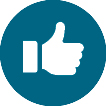
Benefits
- Diameter <10 μm
- Adaptable shape
- Aspect ratio >15
- Drilling transparent materials
- Cylindrical drilling
Performance
- Tolerances of a few μm
- Accuracy of a few μm
- Depth and geometry control
Throughput
- Dependant on material thickness
- From ms to s per hole

Laser workstation
- Pulse duration from fs to ms
- Trepanning head
- Drilling head
- Scanning systems
- Wavelength from IR to UV
Surface condition
Roughness of a few hundreds of nm on the hole inner surface
Process sheet
Areas of application
- Aeronautics
- Automobile
- Electronics
- Diamond spinneret manufacturing
- Watchmaking
- Medical
- Optics
Publications
Associated products or services
-
Selective ablation
The use of a specific pulse duration and/or suitable wavelength(s) makes it possible to work in a condition where the surface layer ablation threshold is lower than the substrate’s. -
Etching - Controlled ablation
Laser engraving is carried out by removing material layer by layer to obtain a 2D or 3D effect on all material types. -

Laser shock peening
Shock waves (> GPa) applied to metallic materials improve their fatigue resistance and their resistance to corrosion. -

Machining of transparent materials
Cutting, welding, drilling and engraving of transparent materials with minimization of mechanical stress. Short or ultra-short pulse lasers allow transparent materials to be machined with or without removal of material and to modify their intra-volume physical properties. -

Laser cutting
Laser cutting enables precision part production of all material types, even of transparent and hard materials such as SIC and diamond. -

Surface texturing
Laser texturing and surface functionalization make it possible to create effects or generate new properties on all surface types.